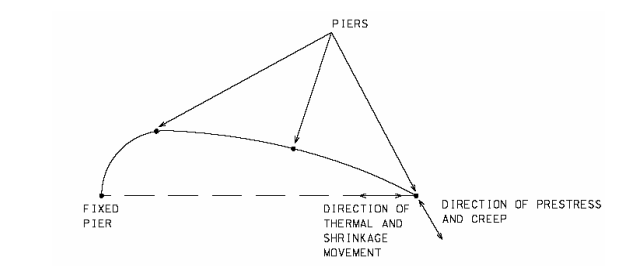To determine the orientation of guided bearings, one should understand the movement of
curved region of a prestressed bridge. Movement of prestress and creep are tangential to the
curvature of the bridge (or along longitudinal axis) while the movement due to temperature
and shrinkage effects are in a direction towards the fixed pier. If the direction of guided
bearings is aligned towards the fixed bearing in the abutment, the difference in direction of
pretress and creep movement and the guided direction towards fixed bearing would
generate a locked-in force in the bridge system. The magnitude of the lock-in force is
dependent on the stiffness of deck and supports. If the force is small, it can be designed as
additional force acting on the support and deck. However, if the force is large, temporary
freedom of movement at the guided bearings has to be provided during construction.
Fig. 1.2 The diagram showing how the guided bearings in piers of the curved region is
oriented with respect to the fixed bearing in abutment.
